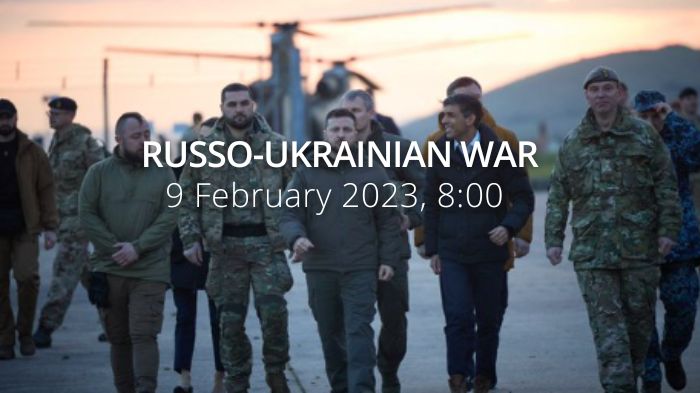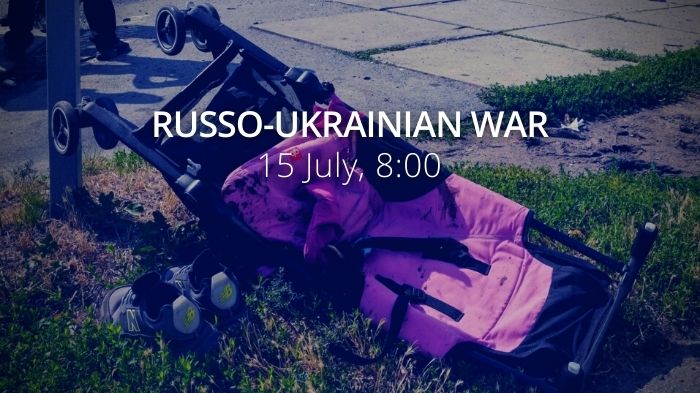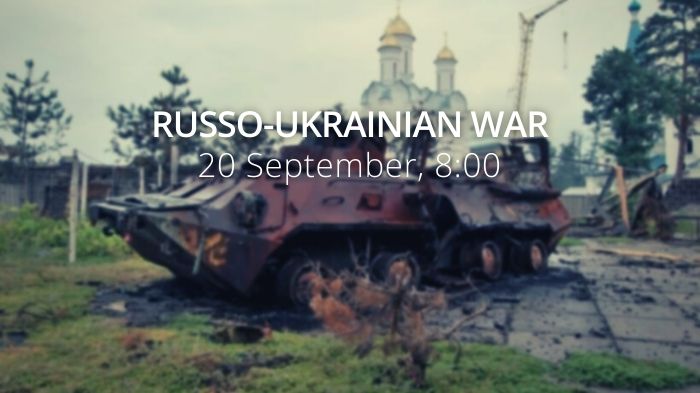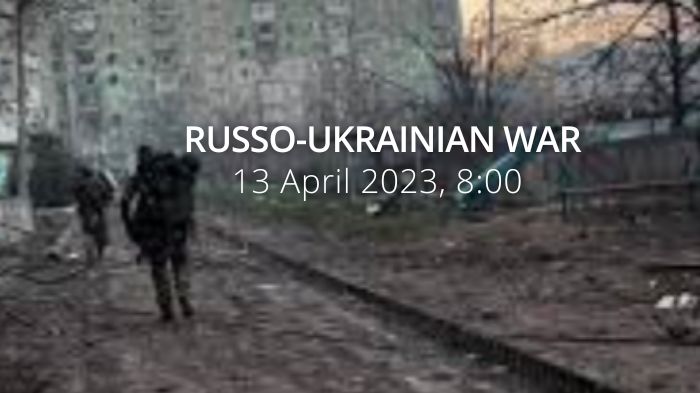Stoltenberg: Moscow has no desire to end the war at present, prepared to continue. Russia has enough missiles only for two large-scale attacks. Military exercises of Russian and Belarusian troops prolonged once again.
Daily overview — Summary report, January 3, 2023
A map of the approximate situation on the ground in Ukraine as of 00:00 UTC 03/01/23.
There have been no notable changes to control since the last update. pic.twitter.com/1XnZXrxwjF
— War Mapper (@War_Mapper) January 3, 2023
Ukrainians in all regions overwhelmingly reject territorial concessions to Russia
85% say under no circumstances should Ukraine give up any of its territories, even if the war will last longer; tendency holds across all regions, even south & east https://t.co/VnsRkpWcKC pic.twitter.com/5Bz0P2AAwT
— Euromaidan Press (@EuromaidanPress) January 2, 2023
Ukraine liberated 40% of occupied territories since February 2022 - Ukraine's Commander-in-Chief Zaluzhnyy
The territories that the Ukrainian Army liberated last year amount to 28% of all the territories of Ukraine occupied by Russia since 2014.https://t.co/z0lFBFBlmr pic.twitter.com/cempx9TQB1
— Euromaidan Press (@EuromaidanPress) January 2, 2023
The General Staff’s operational update regarding the Russian invasion as of 18.00 pm, January 3, 2022 is in the dropdown menu below:
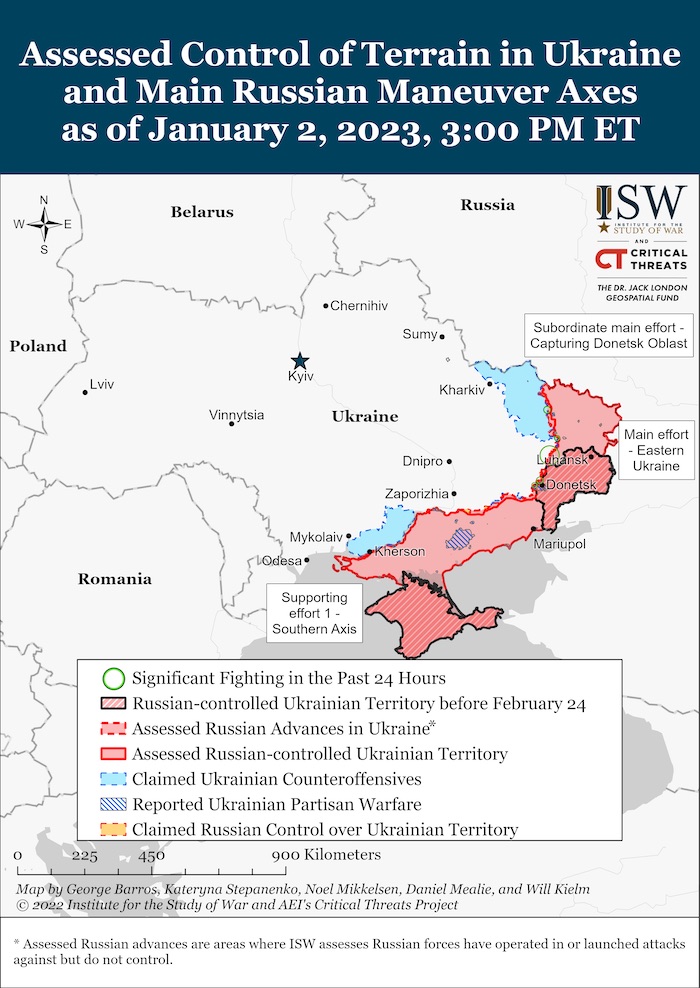
Over the past day, the enemy carried out 51 airstrikes, including 44 Shahed-136 UAVs. All of them were shot down by units of the Defense Forces of Ukraine. Information about the night attack on the capital will be announced a little later. The enemy also fired 55 MLRS attacks, including at the children's hospital in the city of Kherson.
The threat of enemy air and missile strikes on critical infrastructure remains throughout Ukraine.
The enemy continues to focus its efforts on conducting offensive actions in the Bakhmut direction. It is trying to improve the tactical position of the units of his troops in the Kupiansk, Lyman and Avdiivka directions. In the Novopavlivsk and Zaporizhzhia directions, it leads the defense of previously occupied lines. On Kherson - carries out the regrouping of troops, conducts defense and shelling of the positions of our troops and civilian objects along the contact line.
Over the past day, units of the Defense Forces have repelled attacks by occupiers in the areas of the settlements of Stelmakhivka and Bilohorivka in Luhansk oblast and Rozdolivka, Bilohorivka, Soledar, Krasna Hora, Bakhmut, Klishchiivka, Ozeryanivka, Opytne and Krasnohorivka in Donetsk oblast.
No signs of the formation of offensive groups of the enemy were detected in the Volyn, Polissya, Siversk and Slobozhanskyi directions.
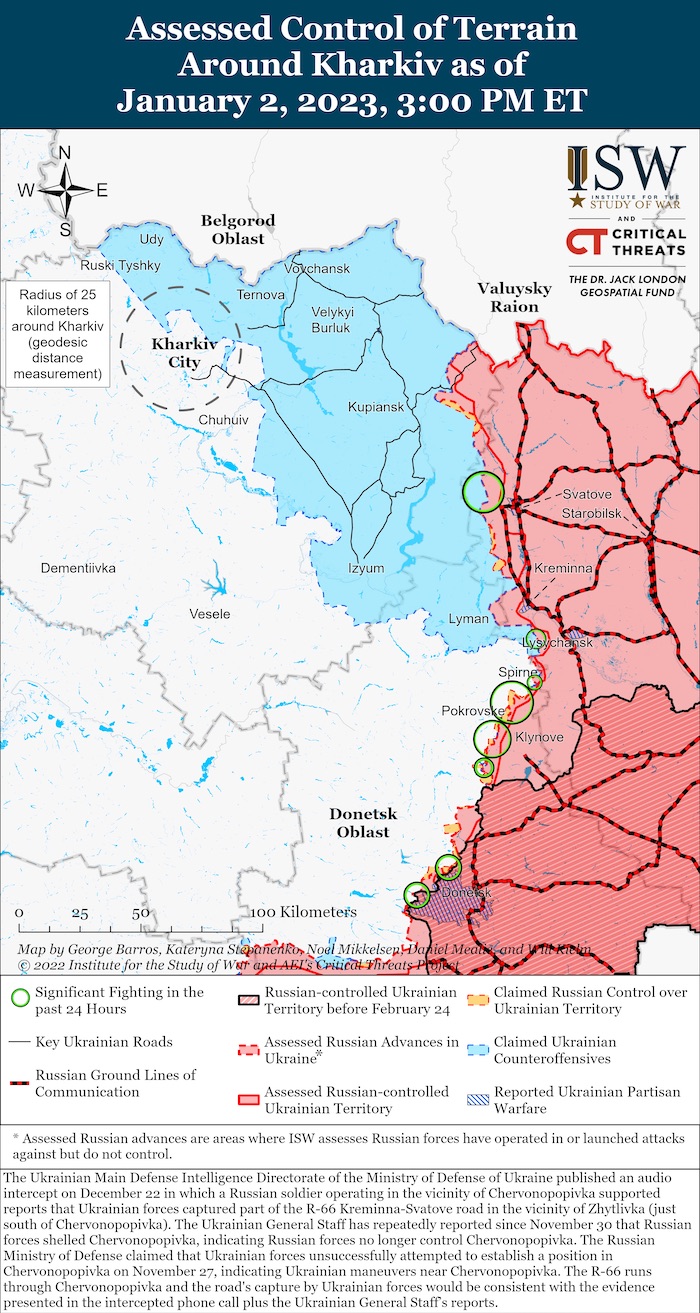
- On the Siverskyi and Slobozhanskyi directions, the areas of Leonivka settlements of Chernihiv oblast were subjected to mortar and artillery shelling; Vilna Sloboda, Esman, Katerynivka and Shalyhine - Sumy oblast and Ohirtseve, Vovchansk and Novomlynsk in Kharkiv oblast.
- In the Kupiansk direction, the enemy shelled the areas of more than 15 settlements. Among them are Andriivka, Kupiansk, Kucherivka, Lyman Pershiy, Vilshana, Orlyanske, Kislivka and Kotlyarivka in the Kharkiv oblast, and Novoselivka and Myasozharivka in the Luhansk oblast.
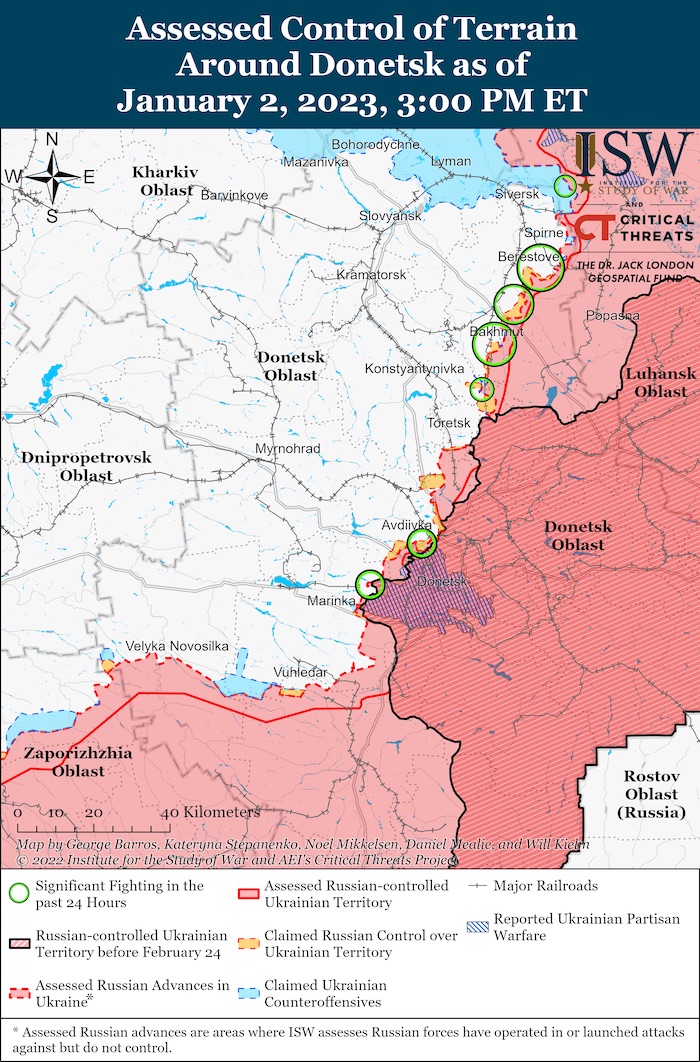
- On the Lyman direction, enemy fire was recorded near Novoyehorivka, Ploshchanka, Nevske, Chervonopopivka of the Luhansk oblast, and Terny and Dibrova of the Donetsk oblast.
- in the Bakhmut direction, more than 15 settlements were shelled. In particular, these are Berestove, Bilohorivka, Bakhmut, Klishchiivka, Kurdyumivka, Stupochky, Bila Hora, Kostiantynivka and Diliivka in Donetsk oblast. The enemy also carried out an airstrike near Bilohorivka.
- in the Avdiivka region, Vodyane, Heorhiyivka, Mariinka and Novomykhailivka of the Donetsk oblast came under the influence of fire.
- in the Novopavlivka direction, Neskuchne, Vremivka, Velyka Novosilka and Vuhledar in the Donetsk oblast were damaged by fire.
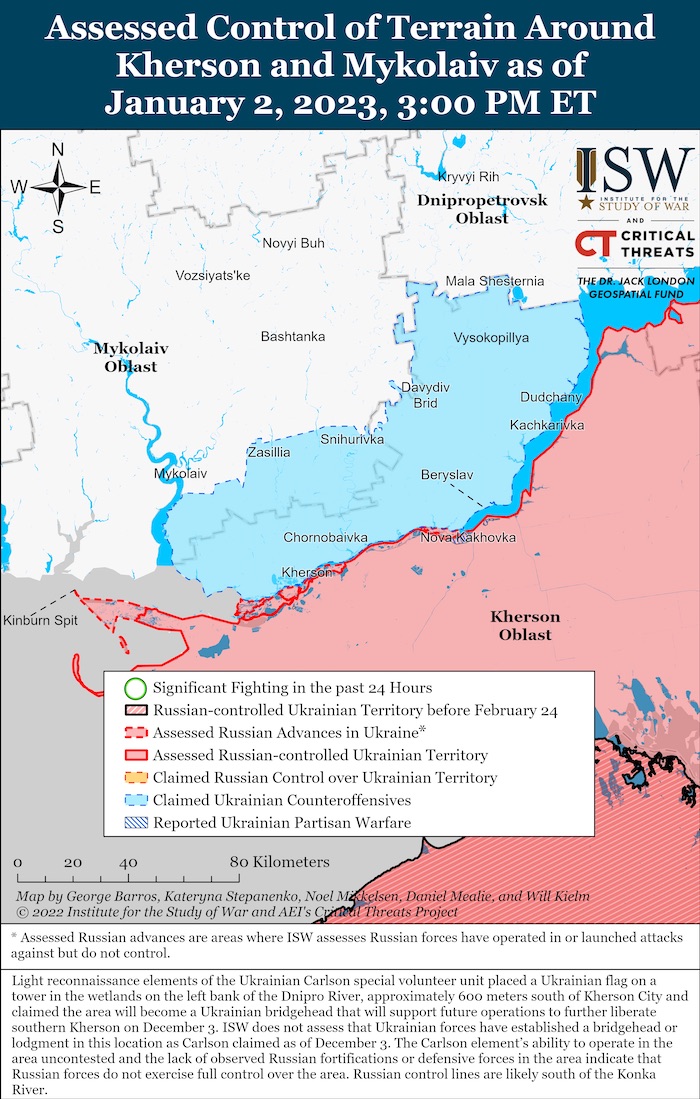
- In the Zaporizhzhia direction, shelling from tanks, mortars and artillery was recorded in the areas of Novosilka and Novopil settlements of Donetsk oblast and Olhivske, Zaliznychne, Orikhiv, Novoandriivka, Shcherbaki, Stepove and Musiivka in Zaporizhzhia.
- In the Kherson direction, the civilian infrastructure of Tyahynka, Novotyahinka, Ponyativka, Dar'ivka, Sadove, Stanislav and Kherson suffered from enemy shelling.
On December 31, it was confirmed that the areas of concentration of manpower and equipment of the occupiers in the temporarily occupied territory of Zaporizhzhia oblast were damaged by fire. In the areas of Tarasivka, Basan, Polohy, Berdiansk, Tokmak, the enemy lost more than 175 wounded servicemen, 12 units of weapons and military equipment of various types and the enemy's ammunition depot were destroyed. Information on liquidated occupiers is being clarified.
[In order to destabilize the humanitarian situation in the temporarily occupied territories of the Kherson oblast and to force the local population to the so-called "voluntary evacuation", the russian occupying forces are firing mortars at Oleshky, Hola Prystan, Plavni, as well as country settlements between the mentioned settlements.]
[Mobilization measures continue in the temporarily occupied Ukrainian Crimea. Military commissariats have started checking lists of people who have not yet participated in a large-scale invasion of Ukraine and are subject to conscription for mobilization in 2023.]
[The enemy continues to use civilian facilities for the treatment of armed russian occupiers. Thus, in the city of Pervomaisk, Alchevsk district, Luhansk oblast, in the premises of a local school, the occupiers deployed a "field hospital" and are treating about 100 servicemen of the occupying forces. In addition, more than 150 wounded mercenaries of the "Wagner" PMK are being treated in the premises of the local maternity hospital, equipped as a military hospital.]
Aviation of the Defense Forces carried out 13 strikes on areas where the invaders were concentrated. Units of missile troops and artillery in turn hit 5 areas of concentration of enemy manpower and military equipment in a day.”
Military Updates
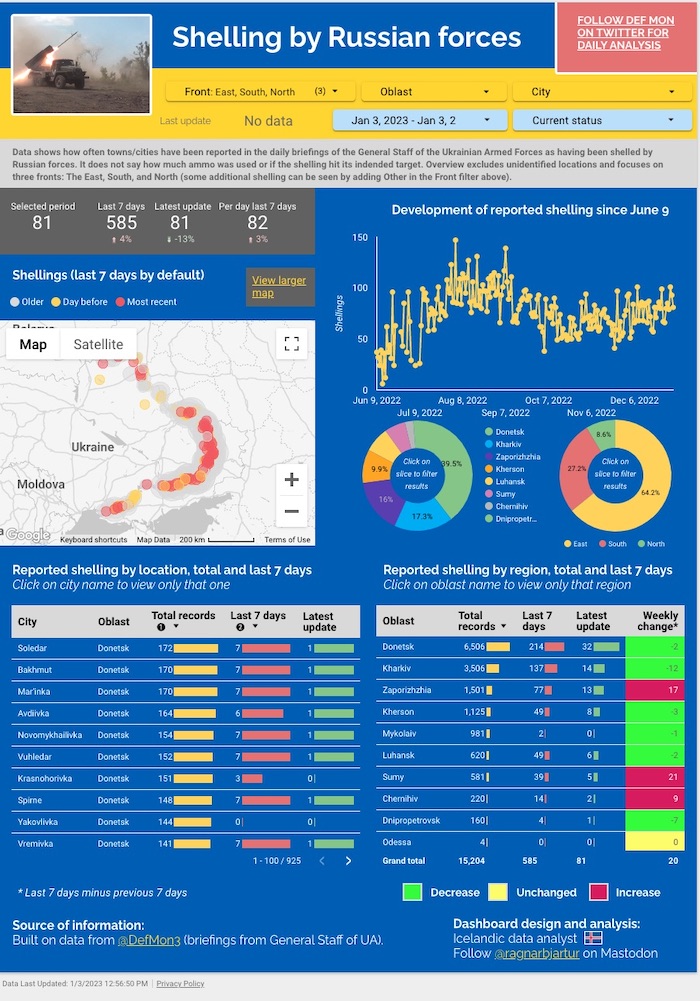
Air defence activated in Kyiv and Kyiv Oblast, explosions rock capital, Ukrainska Pravda reported Monday night. “Air defence forces are operating in Kyiv and Kyiv Oblast, repelling an attack from Russian drones.”
The Ukrainian Defence Forces destroyed all 39 attack drones that were launched to attack Ukraine by Russian forces, along with 2 Orlan-10 reconnaissance UAVs and one Kh-59 air-launched guided missile, on the night of 1-2 January 2023. Anti-aircraft missile units, fighter aircraft and mobile fire groups were engaged in repelling the attack.
It was previously reported that, on the night of 1-2 January, 20 air targets were shot down over Kyiv, along with 9 Shahed UAVs and a Kh-59MK2 high-precision guided missile over Dnipropetrovsk and Zaporizhzhia oblasts, and seven Shahed-136 drones over Mykolaiv Oblast.”
https://twitter.com/EuromaidanPress/status/1610018181917065217
Russia states Ukrainian UAV attacked energy facility in Bryansk Oblast, Ukrainska Pravda reports, citing Alexander Bogomaz, Governor of Bryansk Oblast in the Russian Federation. "A Ukrainian UAV attacked the Klimovsky district this morning [2 January - ed.]. There were no casualties. All emergency services are working at the scene.
An energy facility was damaged as a result of the attack, and there is no electricity in one village."
Military exercises of Russian and Belarusian troops prolonged once again, Ukrainska Pravda reports, citing Belaruski Hajun, an independent Belarusian military monitoring media outlet. “Russia and Belarus have extended training of the regional joint force of the so-called Union State [Russia and Belarus] until at least 8 January.”
Ukraine’s Armed Forces preparing for new Russian attacks, Ukrinform reports, citing Yuriy Ignat, spokesman for the Ukrainian Air Force Command. “Ukraine’s Air Force and Defense Forces are preparing for new Russian attacks, which Russia is likely to carry out on January 7.
We are expecting, we are preparing. You see that there have been attacks for three days in a row, how they have planned it, we don't know. We just have to prepare for it, said Ignat.”
https://twitter.com/EuromaidanPress/status/1609993349716492296
According to British Defence Intelligence, (last 48 hours):
https://twitter.com/DefenceHQ/status/1610213568535740416
- Over the last five days, Russian and Ukrainian forces have probably been fighting for control of the P66 highway, north of the Russian-held Luhansk Oblast town of Kremina.
- The P66 is a key supply route for the northern section of Russia’s Donbas front from the Belgorod region of Russia. Its use has been disrupted by Ukrainian artillery since October, but if Ukraine were able to secure the route, if would highly likely further undermine Russia’s defence of Kremina.
Losses of the Russian army
As of Monday 2 January, the approximate losses of weapons and military equipment of the Russian Armed Forces from the beginning of the invasion to the present day:
- Personnel – about 107440 (+720),
- Tanks – 3031 (+0),
- Armoured combat vehicles – 6093 (+9),
- Artillery systems – 2027 (+6),
- Multiple rocket launchers –MLRS - 423 (+0),
- Air defence means – 213 (+0),
- Aircraft - 283 (+0),
- Helicopters - 269 (+0),
- Automotive technology and fuel tanks – 4725 (+5),
- Vessels/boats - 16 (+0),
- UAV operational and tactical level – 1836 (+44),
- Special equipment – 181 (+0),
- Mobile SRBM system – 4 (+0),
- Cruise missiles – 723 (+0),
Russian enemy suffered the greatest losses (of the past day) at the Lyman, Bakhmut and Avdiivka directions.
Anger in Russia as scores of troops killed in one of war's deadliest strikes, Reuters reports. “Russia acknowledged on Monday that scores of its troops were killed in one of the Ukraine war's deadliest strikes, drawing demands from nationalist bloggers for commanders to be punished for housing soldiers alongside an ammunition dump. Russia's defence ministry said 63 soldiers had died in the fiery blast which destroyed a temporary barracks in a former vocational college in Makiivka, twin city of the Russian-occupied regional capital of Donetsk.
It said the accommodation had been hit by four rockets fired from US-made HIMARS launchers, claiming two rockets had been shot down. Kyiv said the Russian death toll was in the hundreds, though pro-Russian officials called this an exaggeration.
Russian military bloggers, many with hundreds of thousands of followers, said the huge destruction was a result of storing ammunition in the same building as a barracks, despite commanders knowing it was within range of Ukrainian rockets.
Igor Girkin, a former commander of pro-Russian troops in east Ukraine who has emerged as one of the highest profile Russian nationalist military bloggers, said the death toll was in the hundreds, later editing his post to include wounded in that figure. Ammunition had been stored at the site and Russian military equipment there was uncamouflaged, he said.”
Russia has enough missiles only for two large-scale attacks, Ukrainska Pravda reported on 1 January, citing the press service of the Defence Intelligence of Ukraine. “Kyrylo Budanov, the Head of the Defence Intelligence of Ukraine, has said that Russia only has enough missiles left for two large-scale missile attacks on Ukraine. According to Budanov, the Russians have reduced the number of missiles in their strikes to keep simulating the intensity of these attacks.
According to intelligence data, one missile attack by Russia requires 1.5-2 months of preparation. Budanov has emphasised that the Russian Federation [will face] a critical situation with its weaponry by March.
The Head of the Defence Intelligence of Ukraine has also reassured that the military situation in the city of Bakhmut is not catastrophic, but there is a disaster with the city itself because much of it was destroyed. Budanov added that the Russians are suffering heavy losses near Bakhmut. He also believes that 2023 will bring victory to Ukraine, and a change of power to Russia.”
Up to 13% of Iskanders left in Russia, they cannot produce them, Ukrainska Pravda reports, citing Oleksiy Reznikov, Minister of Defence of Ukraine, in an interview LB. "We have counted how many they have fired at us, how many they had and how many they had left. They have dipped into a critical reserve; they have somewhere around 11-13% of Iskanders left. According to their Soviet classical norms, they should keep a reserve of 25-30%. They've already dipped into it. Committed a crime from the point of view of their responsibility. It's the same with Kalibrs. […]
He added that Russia has more than 7,000 S-300 missiles, but invaders have begun using them as surface-to-surface ballistic missiles. It (S-300 - ed.) flies up to 200–220 kilometres, so they terrorise Kharkiv, Mykolaiv, Kherson, and Zaporizhzhia Oblasts, just using the S-300. In order to get to the objects of our critical infrastructure in the Lviv, Ternopil, Kyiv, and Odesa Oblasts, they use either aircraft carriers — Kh-101, Kh-555, for example, or Kalibr sea-based cruise missiles, he said.”
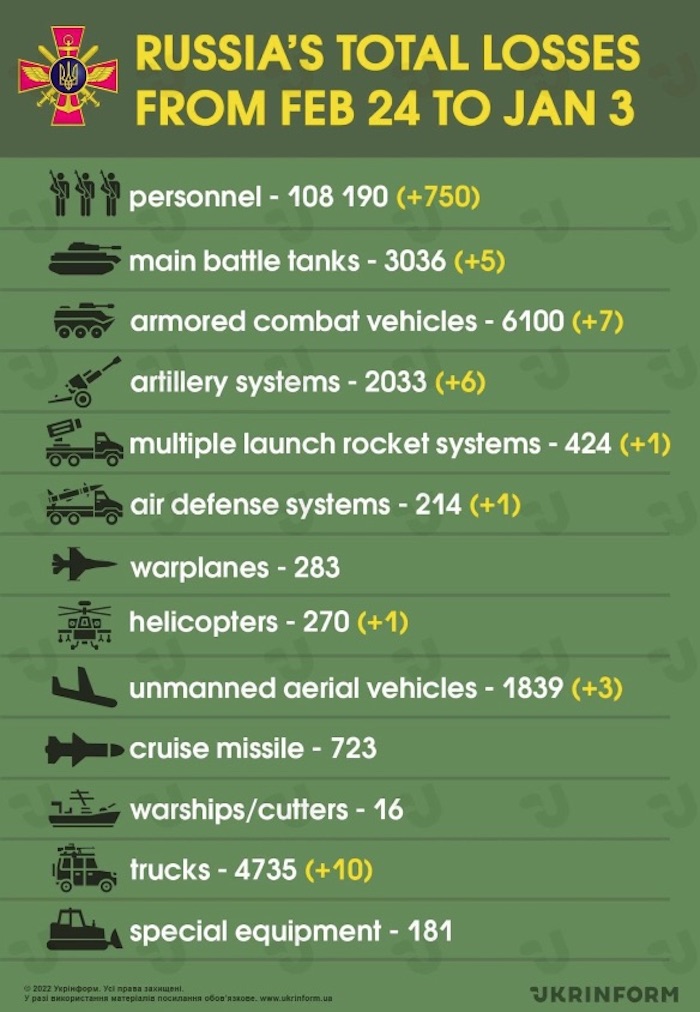
Humanitarian
https://twitter.com/EuromaidanPress/status/1609672063681454081
Energy facility and 11 private houses damaged in Kyiv Oblast, Ukrainska Pravda reports, citing Oleksii Kuleba, Head of Kyiv Oblast Military Administration. “Kyiv Oblast repelled drone attacks for the second night in a row. A critical infrastructure facility and private households in the oblast were damaged on the night of 1-2 January. There were no casualties, as per the preliminary information.»
Situation in energy system under control despite Russian attack at night, Ukrainska Pravda reports, citing the press service for Ukrenergo, a state power-generating company. “There was damage caused by the attack, Ukrenergo reported. Nevertheless, the situation in the energy system was fully under control as of 11:00 on 2 January 2023.
Scheduled power cuts will be implemented throughout the oblasts in the evening in order to prevent additional emergencies. This is necessary due to power transmission line limitations caused by significant damage after 11 missile and 14 drone attacks by the Russians. All oblasts have received consumption limits for the evening period.
After last night’s attack, the situation with the electricity supply in Kyiv has become complicated which is causing emergency power cuts now. Repair work is already underway.»
https://twitter.com/EuromaidanPress/status/1610004130264645636
Environmental
Poland ready to accept for storage cultural valuables from Ukraine, Ukrinform reports, citing Deputy Minister for Culture and National Heritage Jaroslaw Sellin on Radio Poland. “Poland’s authorities are offering to accept movable cultural valuables from Ukraine amid the ongoing war. We have prepared warehouses in libraries and museum archives that are ready to receive mobile collections if the Ukrainians decide to evacuate them, Sellin said.
He noted that currently Ukrainians are reluctant to do so, trying to a large extent to transport cultural valuables to safer locations within Ukraine. However, it is known that there are not so many of these safer locations in Ukraine, since the Russian strikes target the entire territory of Ukraine, the deputy minister emphasized.
He noted that the paintings of artist Jacek Malczewski were taken from the Lviv Art Gallery for storage to the National Museum in Poznan, where they are now exhibited. According to Sellin, since the onset of Russia's full-scale aggression, Poland has been actively helping Ukraine to preserve objects of cultural heritage, in particular by sending supplies to protect monuments, facades, churches, museums, etc. from explosions and fires.
We also help Ukrainians to make an inventory of destroyed cultural objects. There are many sacred sites that were destroyed. We will help Ukrainians to rebuild these facilities when the war ends, Sellin emphasized. Minister of Culture and Information Policy of Ukraine Oleksandr Tkachenko recently stated that more than 1,200 objects of cultural infrastructure had been damaged or destroyed in Ukraine as a result of Russian aggression.”
https://twitter.com/EuromaidanPress/status/1609956160605413376
Legal
Germany begins to produce RCH 155 howitzers for Ukraine, Ukrinform reports, citing the advisor to Kraus-Maffei Wegmann (KMW) Nicholas Drummond. “Germany has started to produce the RCH 155 Boxer Remotely Controlled Howitzer for Ukraine.
A reminder that, on December 7, 2022, Germany’s Federal Government announced the preparation of 18 RCH 155 howitzers for Ukraine. Earlier, the German mass media reported on Kyiv’s intentions to purchase 18 RCH 155 howitzers. According to them, the contract value was estimated at EUR 216 million.”
Imprisoned #Crimea #artist faces ‘terrorism’ charges for protesting #Russia barbaric war against #Ukraine#FreeBogdanZiza #Ziza #LetMyPeopleGo #StandWithUkraine #StopRussia https://t.co/on6vpdCrd7 pic.twitter.com/GQUc2OQUFy
— Halya Coynash (@halyapuff) January 2, 2023
Support
https://twitter.com/EuromaidanPress/status/1609677726847311878
EU Ambassador does not see threat of reduction in support for Ukraine, Ukrainska Pravda reports, citing Matti Maasikas, the EU Ambassador to Ukraine, in an interview with Ukrinform. “Maasikas has pointed out that the European Union had to become a real geopolitical figure and take a firm stance in order to correspond with its own declared values after Russia’s open invasion of Ukraine. The Ambassador has highlighted once again how the Union helped Ukraine: with sanctions against the aggressor, financial and other aid, as well as giving shelter to Ukrainians who fled their country because of the war and the EU decision to get rid of the addiction to Russian energy resources.
I do not see any signs of our member countries weakening in their support for those who are saving themselves from Russia’s full-scale invasion, Maasikas stated.”
Ukrainian recruits to undergo training in Britain, Ukrinform reports. “The training being delivered in the UK is to provide battlefield skills enabling volunteer soldiers to defend their homeland against Russian aggression. The training is for new volunteer recruits who have joined the Armed Forces of Ukraine with little or no previous military experience to teach them the skills required to survive and be effective in frontline combat,” the General Staff wrote on Facebook.
It is noted that the training course, which is based on that given to UK Army Reserve infantry, will be delivered over a minimum of a five-week period.
According to the General Staff, the UK has committed £2.3 billion in military aid to Ukraine, including: anti-tank missiles (including NLAW, Javelin, Brimstone and other anti-tank weapons), multiple launch rocket systems, armoured vehicles, logistics vehicles, stormer vehicles fitted with Starstreak launchers and hundreds of missiles, maritime Brimstone missiles, artillery ammunition, small arms ammunition, anti-structure munitions and 4.5 tonnes of plastic explosive, helmets, body armour, medical supplies, night-vision devices, winter clothing.»
Kyiv receives first high-power generators from Taiwan, Ukrinform reports. “The city of Kyiv has received the first two of 20 planned high-power generators (300–800 kVA) as part of the implementation of a memorandum between Kyiv and Taiwan, according to the Kyiv City State Administration.
The first two generators have already been handed over to Kyivteploenergo. They will be used in city's boiler houses. In total, the project envisages the transfer of about 20 generators to power capital's critical infrastructure facilities. We are very grateful to our partners for their support of Kyiv and Ukraine, Kyiv Mayor Vitali Klitschko said.”
EU employing all available mechanisms to help Ukraine get through winter – Maasikas, Ukrinform reports, citing chief of the EU Delegation in Ukraine, Matti Maasikas. “The European Union is using all mechanisms and partnerships available to help Ukraine survive the winter cold. Russia is trying to turn the cold winter into a weapon of war against the Ukrainian people. For this, Russia continues weaponising energy and deliberately targeting civilian infrastructure, Maasikas said.
Russia’s cruel attacks aim at inflicting even more human suffering on the Ukrainian people, but also depriving hospitals, emergency services and other critical services of electricity, heating, and water. These attacks amount to war crimes for which there can be no impunity. We will need to collectively work to bring all those responsible to account,” said the ambassador. […]
We support Ukraine in repairing damage inflicted by Russia on the energy infrastructure. Numerous energy equipment, from generators to transformers and cables, have been delivered via the EU Civil Protection Mechanism. Overall, European countries have mobilised more than 800 high-capacity power generators to Ukraine’s national authorities via this mechanism, the envoy noted.
Separately, he added, many of the ongoing EU-funded projects have been mobilized or repurposed in order to purchase generators and other emergency equipment. The EU is also helping to repair the critical municipal infrastructure, such as heating, water and wastewater supply.
Soon after the start of the full-scale invasion, the EU-led ULEAD with Europe programme, the Union’s flagship decentralisation support activity, handed over 2,500 generators to Ukraine municipalities. […]”
New Developments
Russian missiles, drones, and other weapons terrorizing Ukraine for 11 months are chock-full of Western electronics that got into Russia despite sanctions. Our latest analysis looks at how to cut off the oxygen to Russia's war machine.
Read more:⤵️https://t.co/7RS7tMPqVk pic.twitter.com/SCUV3Veh97— Euromaidan Press (@EuromaidanPress) January 2, 2023
- Stoltenberg: Moscow has no desire to end war at present, prepared to continue, Ukrinform “Western countries must be prepared to provide long-term support to Ukraine as Russia shows no signs of relenting. NATO Secretary General Jens Stoltenberg told the BBC that military support would ensure the survival of Ukraine as a sovereign country and force Russia to sit down and negotiate an end to the war. Russia's partial mobilisation programme, ordered in September, showed Moscow had no desire to end the war at present, he said.”
- If Putin saves face, it will be the last nail in the coffin of postwar order – Polish Ambassador to UN, Ukrainska Pravda reports, citing Krzysztof Szczerski, Poland’s Ambassador to the United Nations, in an interview with the Polish outlet PAP. “"For the essence of peace, the most important question is how the issues with Russia will be sorted out. Is it possible that Russian imperialism will be recognised as an ideology that threatens the world order on the same basis as German Nazism was in the past? Because if that happened, it would pave the way to repeating the decisions made after World War II: depriving Russia of the instruments that allow it to play the role of a global superpower (including at the UN); handing over war criminals in uniform and in suits, including Putin, to the international court; paying war reparations, and other similar measures. If, as Szczerski says, the option of "restoring order" and allowing Putin to save face prevails, it could be "the last nail in the coffin of the postwar order as symbolised by the principles of the UN Charter".
https://twitter.com/EuromaidanPress/status/1609940944002121731
Assessment
- On the war.
The Institute for the Study of War has made the following assessment as of January 2, 2023:
Ukrainian air defenses reportedly intercepted all drones from two consecutive nights of Russian drone strike attacks against Ukraine on December 31 – January 2. Ukraine’s air force reported on January 1 that Ukrainian air defense forces shot down all 45 Russian Iranian-made Shahed-136 drones that Russia fired at Ukraine on New Year's Eve.[1] Ukrainian Air Force Spokesman Yuriy Ignat stated on January 1 that Ukrainian forces used the US-provided NASAMS air defense system to shoot down these drones.[2] The Ukrainian General Staff reported on January 2 that Ukrainian forces intercepted all 39 Shahed-136 drones launched against Ukraine between the night of January 1 and 2.[3] The Ukrainian General Staff again reported on January 2 that Ukrainian forces shot down all 27 Shahed-136 drones that Russian forces launched against Ukraine on January 2, though it is unclear if this figure includes the previously reported intercepts from the night between January 1 and 2.[4] Deputy Head of the Ukrainian Main Intelligence Directorate (GUR) Vadym Skibitsky reiterated on January 1 that Russian forces only have enough cruise missiles to conduct two to three more large-scale missile attacks against Ukraine.[5]
Russia’s air and missile campaign against Ukraine is likely not generating the Kremlin’s desired information effects among Russia’s nationalists. Russian forces conducted a cruise missile strike against an object in Khmelnytskyi Oblast — reportedly a base of the Ukrainian 8th Separate Special Forces Regiment — on December 31.[6] A Russian milblogger stated that the strike, while well-executed and a good information operation, is too little too late.[7] The blogger argued that Russia needed to systematically conduct such strikes earlier on in the war, that the strike should have had follow-up strikes to ensure maximum damage, and that the timing of this strike was inopportune since Ukrainian elements were unlikely to be at the base on New Year’s Eve.[8] The blogger noted that this was not the first time that Russian forces failed to deliver effective strikes due to an absence of secondary strikes and that Russia should generally be more thorough in its destruction.[9]
A devastating Ukrainian HIMARS strike on a Russian base in Makiivka, Donetsk Oblast, on December 31 generated significant criticism of Russian military leadership in the Russian information space. The Ukrainian General Staff reported that a Ukrainian precision strike on a Russian manpower and military equipment concentration point in Makiivka destroyed up to 10 pieces of equipment but did not release an official casualty number as of January 2.[10] The Department of Strategic Communications of the Ukrainian Armed Forces stated on January 1 that the strike killed 400 mobilized personnel and injured 300.[11] Geolocated footage published on January 1 also placed the aftermath of the strike at the Vocational School No. 19, fewer than 13km east of the frontline.[12] The Russian Ministry of Defense (MoD) acknowledged the strike, claiming that four of the six rockets killed 63 Russian servicemen.[13] Samara Oblast Governor Dmitry Azarov confirmed that among the deceased servicemen are residents of the oblast, and some Russian sources claimed that 600 servicemen of a mobilization regiment were in the school building at the time of the strike.[14] Some milbloggers claimed that the death count was about 110, with over 100 wounded personnel.[15]
The Russian MoD is likely attempting to deflect the blame for its poor operational security (OPSEC) onto Donetsk People’s Republic (DNR) officials and mobilized forces. DNR law enforcement officials told Russian state wires that the strike occurred when Russian servicemen violated operational security by using personal cell phones, allowing Ukrainian forces to conduct a precision strike at the base.[16] Kremlin-leaning outlets and some milbloggers amplified the claim, stating that Russian forces should not underestimate the Ukrainian ability to exploit poor OPSEC practices on the frontlines and called on the Kremlin to introduce stricter guidelines on cell phone use among servicemen.[17] Luhansk People’s Republic (LNR) Deputy Interior Minister Vitaly Kiselyov amplified milblogger reports that military commanders are demanding the resignation of DNR Head Denis Pushilin.[18] Some DNR public officials have also called for the punishment of the official who had decided to use the school.[19] The Russian MoD may have deliberately relied on the DNR officials to blame OPSEC violations on mobilized servicemen for the attack in an effort to make the DNR the responsible party.
The Russian MoD’s vague acknowledgment of the strike generated criticism towards the Russian military command, however. Wagner-affiliated milbloggers stated that Russian military command had made it easy for the Ukrainian forces to strike several hundred servicemen in one location, calling the DNR explanation of cell phone usage a “lie.”[20] A former Russian officer had also stated that Russian forces stored ammunition in the school’s basement, enabling the devastating strike.[21] Other milbloggers stated that the Russian command witnessed similar strikes throughout the past 11 months but were “criminally negligent” and failed to disperse the Russian forces quartered in Makiivka into smaller groups further in the rear.[22] Several milbloggers referred to a Putin statement about the necessity for the Ministry of Defense (MoD) to take accountability and listen to criticism on December 21 while calling on the Kremlin to punish the commander responsible for the OPSEC failures.[23] Wagner financier and avid critic of the Russian military command, Yevgeniy Prigozhin, offered an uncharacteristic and vague comment about the situation — stating that he could not reveal how Wagner prevents similar OPSEC problems.[24] ISW previously reported on two other instances of mass milblogger criticism: the failed Russian river crossing in Bilohorivka in May 2022 and the botched Russian offensive operation on Pavlivka in October 2022.[25]
Such profound military failures will continue to complicate Putin’s efforts to appease the Russian pro-war community and retain the dominant narrative in the domestic information space. Russian sources claimed that Russian President Vladimir Putin ordered the military and the Investigative Committee to investigate the incident in Makiivka by January 6.[26] Putin’s inability to address the criticism and fix the flaws in Russia’s military campaign may undermine his credibility as a hands-on war leader.
Russian sources responded lukewarmly to Russian President Vladmir Putin’s staged New Year’s address, while Russian milbloggers lauded Wagner Group financier Yevgeniy Prigozhin’s appearances on the frontlines over the New Year’s holidays. Several Russian milbloggers amplified social media criticisms that Putin used background actors rather than standing with real soldiers during his address.[27] These criticisms and a chain of Putin’s canceled public appearances and meetings with ordinary citizens may show Putin as out of touch. One pro-Kremlin milblogger acknowledged the debate via an editorial in a popular Russian newspaper in which he vehemently denied that Putin used actors at his speech.[28] Former militant commander and prominent Russian milblogger Igor Girkin drew a direct comparison between Putin and Prigozhin.[29] Girkin posted that he would not comment on Putin’s speech but that Prigozhin decided to fight bureaucracy and corruption and gave a sensational New Year’s speech.[30] Meanwhile, several Russian sources praised Prigozhin for a series of appearances with real Russian soldiers on the frontlines in Ukraine on New Year’s Eve and New Year’s Day.[31]
Prigozhin used reporting on deceased Wagner Group mercenaries and his prominence in New Year’s features to continue to push for legal recognition of Wagner Private Military Company (PMC) and to criticize bureaucrats not favorable to Wagner PMC. Prigozhin continues to seek increased legitimization of and state benefits for Wagner forces, although private military companies are illegal in Russia.[32] Prigozhin told a reporter who questioned why Wagner soldiers’ relatives are not receiving the bodies of their deceased soldiers that Wagner forces took care of the dead even on New Year’s while the Russian government, which is supposed to provide death certificates, has “[rested] since the beginning of the war.”[33] Prigozhin accused bureaucrats of desecrating the memory of the dead by treating dead servicemembers as objects in plastic bags.[34] Prigozhin publicly visited a Wagner-specific cemetery and memorial and the main base of the Wagner Group in Krasnodar Krai on January 1.[35] Prighozhin has previously complained that Russian authorities refuse to allow for the burial of Wagner mercenaries in Russian military cemeteries, as ISW has reported.[36]
The Kremlin is likely co-opting some Russian milbloggers who are willing to sell out in exchange for political prestige. Prominent Russian milbloggers Alexander Sladkov and Yevgeniy Poddubny attended the Kremlin primetime New Year’s Eve television show Goluboy Ogonek 2023 in Moscow on December 31.[37] This program airs immediately after Putin’s annual New Year's Eve speech and is attended by Putin and Kremlin political and cultural elites. Sladkov and Poddubny have both criticized the Russian military’s failures in Ukraine. The creators of the prominent Telegram channel Rybar had also stated that they received offers to create an open-source intelligence (OSINT) program to benefit Russian private businesses and force structures.[38] Rybar added that they already gave a lecture at the elite Russian state-run Moscow State Institute of International Relations (MGIMO) and are continuing to work in Putin’s “special military operation” working group.
Key Takeaways
- Ukrainian air defenses reportedly intercepted all drones from two consecutive nights of Russian drone strike attacks against Ukraine on December 31 – January 2.
- Russia’s air and missile campaign against Ukraine is likely not generating the Kremlin’s desired information effects among Russia’s nationalists.
- A devastating Ukrainian HIMARS strike on a Russian base in Makiivka, Donetsk Oblast, on December 31 generated significant criticism of Russian military leadership in the Russian information space.
- The Russian MoD is likely attempting to deflect the blame for its poor operational security (OPSEC) onto Donetsk People’s Republic (DNR) officials and mobilized personnel.
- Russian sources responded lukewarmly to Russian President Vladmir Putin’s staged New Year’s address, while Russian milbloggers lauded Wagner Group financier Yevgeniy Prigozhin’s appearances on the frontlines over the New Year’s holidays.
- Russian forces continued to carry out unsuccessful attempts to improve their tactical positions northwest of Svatove after reportedly conducting a tactical pause.
- The Ukrainian Center for Defense Strategies reported that Russian forces are continuing to deploy personnel on the Kharkiv-Siversk frontline.
- Ukrainian officials reported that Russian forces are redeploying along the eastern axis while struggling to maintain their pace of artillery strikes.
- Russian forces attempted limited offensive operations in Zaporizhzhia Oblast and continued efforts to reinforce defensive structures.
- Russian President Vladimir Putin continues to extend financial promises made to Russian soldiers as Ukrainian officials continue to warn of an impending wave of Russian mobilization.
Europe’s big question: What a diminished Russia will do next, CNN asked on January 1. “Russia’s war in Ukraine has proven almost every assumption wrong, with Europe now wondering what left is safe to assume. Its invasion in February managed to startle in every way. To those who thought Moscow was sane enough to not attempt such a massive and foolhardy undertaking. To those who felt the Russian military would waltz across a land of 40 million people and switch to clean-up operations within 10 days. And to those who felt they had the technical and intelligence prowess to do more than just randomly bombard civilian areas with ageing artillery; that the Kremlin’s military had evolved from the 90s levelling of Grozny in Chechnya.
And finally, to those who felt nuclear saber-rattling was an oxymoron in 2022 – that you could not casually threaten people with nukes as the destruction they brought was complete, for everyone on the planet.
Still, as 2022 closes, Europe is left dealing with a set of known unknowns, unimaginable as recently as in January. To recap: a military once considered the world’s third most formidable has invaded its smaller neighbor, which a year ago excelled mostly in IT and agriculture.
Russia spent billions of dollars apparently modernizing its military, but it turns out that it was, to a large extent, a sham. It has discovered its supply chains don’t function a few dozen miles from its own borders; that its assessment of Ukraine as desperate to be freed from its own “Nazism” is the distorted product of nodding yes-men, feeding a president – Vladimir Putin – what he wanted to hear in the isolation of the pandemic.
Russia has also met a West that, far from being divided and reticent, was instead happy to send some of its munitions to its eastern border. Western officials might also be surprised that Russia’s red lines appear to shift constantly, as Moscow realizes how limited its non-nuclear options are. None of this was supposed to happen. So, what does Europe do and prepare for, now that it has?
Key is just how unexpectedly unified the West has been. Despite being split over Iraq, fractured over Syria, and partially unwilling to spend the 2% of GDP on security the United States long demanded of NATO members, Europe and the US have been speaking from the same script on Ukraine. At times, Washington may have seemed warier, and there have been autocratic outliers like Hungary. But the shift is towards unity, not disparity. That’s quite a surprise.
Declarations that Russia has already lost the war remain premature. There are variables which could still lead to a stalemate in its favor, or even a reversal of fortune. NATO could lose patience or nerve over weapons shipments, and seek economic expediency over long-term security, pushing for a peace unfavorable to Kyiv. But that does, at this moment, seem unlikely.
Russia is digging in on the eastern side of the Dnipro River in southern Ukraine, and has the advantage that the Donetsk and Luhansk frontlines in Ukraine’s east are nearer its border. Yet its challenges are immense: poorly trained, forcibly conscripted personnel make up 77,000 of its frontline troops – and that’s according to the glossy assessment voiced by Putin. It is struggling for munitions, and seeing regular open, internal criticism of its winter supply chain.
Ukraine is on home territory, with morale still high, and Western weapons still arriving. Since the collapse of Moscow’s patchwork of forces around the northeastern city of Kharkiv in September – where their supply lines were cut by a smarter Ukrainian force – the dynamic has all been against Moscow.
The prospect of a Russian defeat is in the broader picture: that it did not win quickly against an inferior adversary. Mouthpieces on state TV talked about the need to “take the gloves off” after Kharkiv, as if they would not be exposing a fist that had already withered. Revealed almost as a paper-tiger, the Russian military will struggle for decades to regain even a semblance of peer status with NATO. That is perhaps the wider damage for the Kremlin: the years of effort spent rebuilding Moscow’s reputation as a smart, asymmetrical foe with conventional forces to back it up have evaporated in about six months of mismanagement.
The question of nuclear force lingers still, chiefly because Putin likes regularly to invoke it. But even here Russia’s menace has been diminished. Firstly, NATO has been sending unequivocal signals of the conventional devastation its forces would mete out were any form of nuclear device used. Secondly, Russia’s fairweather allies, India and China, have quickly assessed its losing streak and publicly admonished Moscow’s nuclear rhetoric. (Their private messaging has likely been fiercer.)
And finally, Moscow is left with a question nobody ever wants to learn the answer to: if its supply chains for diesel fuel for tanks 40 miles from its border do not function, then how can they be sure The Button will work, if Putin reaches madly to press it? There is no greater danger for a nuclear power than to reveal its strategic missiles and retaliatory capability do not function.
Despite this palpable Russian decline, Europe is not welcoming in an era of greater security. Calls for greater defense spending are louder, and heeded, even if they come at a time when Russia, for decades the defining issue of European security, is revealing itself to be less threatening.
Europe is realizing it cannot depend on the United States – and its wild swings between political poles – solely for its security.
Meanwhile thousands of innocent Ukrainians have died in Putin’s egotistical and misguided bid to revive a Tsarist empire. More broadly, authoritarianism has been exposed as a disastrous system with which to wage wars of choice.
Yet some good has come from this debacle. Europe knows it must get off its dependence on Russian gas immediately, and hydrocarbons in general in the longer term, as economic dependence on the fossil fuels of dictators cannot bring longer-term stability.
So, how does the West deal with a Russia that has experienced this colossal loss of face in Ukraine and is slowly withering economically because of sanctions? Is a weak Russia something to fear, or just weak? This is the known unknown the West must wrestle with. But it is no longer such a terrifying question.
For over 70 years, the Russians and West held the world in the grip of mutually assured destruction. It was a peace based on fear. But fear of Moscow should be ebbing slowly, and with that comes the risk of miscalculation. It also raises a less chilling prospect: that Russia – like many autocracies before it – may be fading, undermined by its own clumsy dependence on fear domestically.
Europe’s challenge now is to deal with Russia in a state of chaotic denial, while hoping it evolves into a state of managed decline. One abiding comfort may be that, after underestimating Moscow’s potential for malice, the risk for Europe would be to overstate its potential as a threat.”
- Consequences and what to do?
Constant Russian attacks and energy terror did not demoralise Ukrainians: majority is opposed to concessions, Ukrainska Pravda reports, citing survey conducted by the Kyiv International Institute of Sociology (KIIS) on 4-27 December 2022. “Opinion polls have confirmed the firm unreadiness of Ukrainians to agree on territorial concessions despite the pressure and terror carried out by the aggressor state, Russia.
In May, July and September 2022, we asked a question about the readiness for territorial concessions to achieve peace as soon as possible. Now, in December 2022, we have asked this question again to gauge the dynamics of public moods. […] For 85% of respondents, no territorial concessions are acceptable. Only 8% believe that in order to achieve peace and preserve independence, it is possible to give up some territories.
In September, 87% considered the concessions unacceptable, but the difference with the current indicator is within statistical error, that is, in fact, no changes have occurred. […] The vast majority of the population is against any territorial concessions in all oblasts of Ukraine. Even among the residents of the east of Ukraine, where intense battles are taking place now, 80% are against concessions (only 9% are ready for them); among the residents of the south, 82% do not support the idea of concessions (only 10% do). […] The absolute majority of Ukrainian-speaking, bilingual and Russian-speaking Ukrainians (respondents who consider themselves Ukrainians as per their nationality) are against any kind of concessions. […]
From October until now, Russia has launched regular terrorist attacks on Ukraine’s energy infrastructure, leaving millions of Ukrainians without electricity, heating and water. An obvious goal is to torture the population and create a situation of internal tension to put pressure on the military and political leadership of the country. However, an examination of social view dynamics reveals that all of the attacks have had no effect on Ukrainians' willingness to make concessions."


